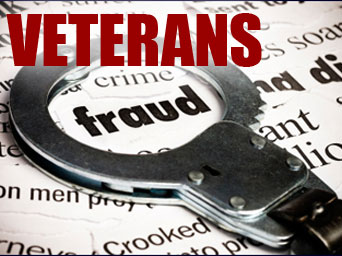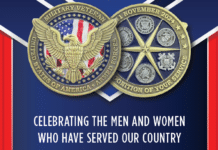 ‘Scoundrels, Thieves and Rip-off Artists’ Prey on Veterans
‘Scoundrels, Thieves and Rip-off Artists’ Prey on Veterans
–
by Chad Garland and Andrew Knochel | News21
–
Over four years, as increasing numbers of veterans returned home from wars in Iraq and Afghanistan, a charity called Disabled Veterans Services of Pompano Beach, Fla., reported raising more than $8 million in cash and nearly $4 million in donated goods that it claimed would help disabled and homeless veterans.
But barely a nickel of each dollar the charity raised in cash went directly to help veterans, a News21 analysis shows. Although it claimed to have sent about $2.5 million in donated drugs and medical supplies to a Boston homeless shelter, the shelter said it received just one shipment worth about $210,000.
Another charity, Help Hospitalized Veterans of Winchester, Calif., spent only 25 cents of every dollar it raised on arts-and-crafts kits and “craft care specialists” as “diversion therapy for veterans facing extended hospitalization.” Most of the rest of the money, according to the charity’s filings with the Internal Revenue Service, paid for mass mailings soliciting more money and urging Americans to volunteer at veterans’ hospitals and become pen pals with patients.
In the years that the country has been at war, Americans have given more than $12 billion to veterans’ and military charities. Donations grew nationwide from more than $615 million in 2001 to more than $1.6 billion in 2011 alone.
Federal and state laws demand financial reporting from all charities, but they require little in the way of reporting the results of services the charities claim to provide, the News21 investigation shows. Though many charities offered needed help, others spent much of their money — sometimes most of it — on the organization’s overhead expenses, rather than services promised to veterans.
“The scoundrels and the thieves and the rip-off artists … that want to make a lot of money know that these are categories of charities where the American public is gravitated, it pulls at the heartstrings and they know that the tendency of Americans is to give impulsively, emotionally with that pull,” said Ken Berger, president and chief executive officer of Charity Navigator, an independent charity evaluator. “They exploit that and they use that.”
Using federal tax filings, News21 identified more than 1,900 public charities across the country working to support veterans, service members and their families between 2001 and 2011.
A review of those filings, called Form 990s, shows charities claim to provide everything from cash assistance and craft kits to housing help and wheelchair repair. But descriptions of their programs often are cursory, which means donors may know little about how their money actually is spent.
Charity experts and watchdogs say at least 70 percent of a charity’s expenses generally should go to programs or services and no more than 30 percent should be used to pay for its management and fundraising. News21 found that seven of the top 12 charities that raised the most in donations from 2001 to 2011 spent 75 percent or more on programs and services from 2001 to 2011.
The Fisher House Foundation, for example, which builds accommodations for families of service members and veterans receiving medical treatment at military bases and VA medical centers, directed more than 95 percent of its spending, about $230 million, to its programs from 2001 to 2011. It spent less than $4 million on fundraising.
The Navy-Marine Corps Relief Society, which helps military veterans or their families during tough times, raised more than $185 million, but spent just 2 percent on fundraising, among the best rates of the charities analyzed for this story.
“We could really care less if you’re collecting millions and millions of dollars. What are the results — are they significant?” asked Kimberly Mitchell, who was deputy director of the Office of Warrior and Family Support for the chairman of the Joint Chiefs of Staff until early 2012. She is now president of the Dixon Center for Military and Veterans Community Services, a program of Easter Seals.
Disabled Veterans Service, for example, which until recently operated out of a single room in a suburban Florida office building, spent 86 cents of every dollar on private fundraising companies and telemarketers tasked with drumming up more money between 2008 and 2011. Another 9 cents of every dollar was paid to private management consultants to keep the books and prepare state and federal filings.
In four years, with no paid staff or volunteers of its own, DVS reported that it had raised more than $12 million in cash and donated goods for its stated mission, “to help motivate, and offer assistance programs to disabled veterans in order to assist the service related disabled veteran in regaining their position back into society.”
DVS’ primary service involved paying for the shipping of donated goods to homeless veterans shelters. It claims to have received about $3.9 million in such donations, mostly “drugs and medical supplies,” between 2009 through 2011, according to tax returns.
But though DVS says it sent about $2.5 million in supplies to the New England Center for Homeless Veterans in Boston, the center could confirm only one shipment, which DVS valued at about $210,000, was ever received.
“Upon reviewing our records, New England Center for Homeless Veterans can verify a gifts-in-kind donation from Disabled Veterans Services in 2009,” said Charlene Pontbriand, senior vice president for the nonprofit. “A letter of gratitude for that gift was shared with them.”
It has no record of receiving the remaining $2 million or more that DVS says it shipped, she said.
These types of in-kind donations have been the subject of concern, according to the IRS exempt organizations division’s 2012 annual report, because of “poor record keeping of the gifts-in-kind, inaccurate reporting of this activity” and “inadequate discretion and control over the final disposition of the items.” It did not mention any specific organization.
he report also says more cases are being reviewed “for potential examinations, with specific emphasis on organizations with limited charitable activity and excessive compensation.”
No representative of DVS would comment for this story, despite repeated calls. Visits to business addresses associated with the charity or listed in its filings with state and federal agencies revealed most to be post-office boxes. DVS’ only apparent business office was vacant in mid-July. A neighboring business owner said it had been vacated six months earlier.
Records show its president is Glen Svensson, who also could not be reached. Efforts to contact him at his last known address in Pompano Beach were unsuccessful; his house was foreclosed on in May.
According to four years’ of IRS filings, the charity raised most of its $8.4 million in cash by hiring telephone solicitation companies. Of that, at least $7 million went to the three for-profit fundraisers — Courtesy Call, Innovative Teleservices and Associated Community Services. Don Tanner, a spokesman for Associated Community Services said, “ACS does not comment on specific clients or client work.” The other two did not respond to requests for interviews.
Much of the rest went to outside management services, mainly to a company named FUM Management, which lists as its business address a mailbox in a UPS Store about six miles from the DVS office. For managing the charity, it was paid $340,000 in 2011. Since 2008, DVS paid a total of about $740,000 in “management fees,” though it does not specify to whom, other than that paid to FUM in 2011.

The full extent of FUM’s connection to the charities is an intricate one; Jamie O’Bryan is named president of FUM Management and was listed in records as DVS’ president working 10 hours a week, according to the charity’s 2008 tax records. She lives with Doug Sailors, a convicted money launderer who calls himself a management consultant for FUM. Both were evicted from a luxury townhome in Pompano Beach and now live together in a million-dollar home in Lighthouse Point, Fla.
At News21’s request, Charity Navigator reviewed DVS’ 2011 tax filing. DVS fell short on many of the measures the charity review site evaluates, specifically, among other things, the amount it spent on fundraising.
“We see more charities that are low-rated by us that are in the veterans, firefighters, police and cancer cause areas,” Charity Navigator’s Berger said. “Certainly there are great veterans’ charities, but there are some real horror shows. There’s just some really horrible stuff going on that’s just wildly inefficient.”
The News21 analysis also found that Help Hospitalized Veterans, or HHV, of Winchester, Calif., near San Diego, spent nearly 55 cents of every dollar, about $240 million, on fundraising and activities that combined fundraising with “awareness programs.”
One of those programs, which cost $160 million, mostly involved a direct-mail campaign that sent more than 440 million letters to the public from 2001 through 2011 — that’s nearly four letters for every household in America. Tax filings show that besides soliciting money, the letters called on Americans to volunteer at VA hospitals or become pen pals with veterans.
According to its website, HHV’s primary mission is to provide veteran and military patients with arts-and-crafts kits to show them “someone out there really does care.” The costs for both the craft kits and salaries paid to craft-care specialists who help with veterans’ arts projects — $110 million — made up less than 25 percent of the charity’s spending since 2001.
The question of whether HHV’s direct-mail campaign should have counted as a program or service is part of a lawsuit California Attorney General Kamala Harris filed against HHV in August 2012. The suit also alleges the charity’s founders engaged in self-dealing, fraudulent fundraising and other unlawful activities.
The estimated damages from HHV’s activities were more than $4.4 million, according to the attorney general’s complaint, and included the purchase of a Virginia condominium and $80,000 golf memberships as a “perk” for board members. It also alleges that the charity used accounting “gimmicks” to inflate its reported spending on programs that benefited veterans, “decreasing its reported fundraising costs from 65 percent of total costs to less than 30 percent.”
HHV denied all charges. Lynda Gledhill, a spokeswoman for Attorney General Harris, said the investigation is ongoing.
Former Sen. Bob Dole called HHV founder Roger Chapin one of the worst charity operators he’d seen. “He’s a good example of a guy who’s milked the system,” Dole told News21.
Dole, a wounded World War II veteran himself, has advocated recently for greater scrutiny of veterans’ charities, saying, “They never tell you what they do for the veteran, they just talk about projects.”
Officials of HHV did not return repeated emails and phone calls for comment.
The national headquarters of Paralyzed Veterans of America, or PVA, spent more money than any other veterans’ charity on fundraising from 2001 through 2011, nearly $350 million, according to the News21 analysis. More than $9.5 million of that went to commercial fundraising companies.
Each year, PVA spent $95 million on average, with $56 million paying for a direct-mail campaign to get money and support for its public education program, according to tax filings. But it also paid for programs that directly helped veterans, such as assisting with disability claims (about $19 million annually), sponsoring sports programs for disabled veterans (about $3 million annually) and research for spinal cord injuries and disease (about $2 million).
“Something you need to understand about a nonprofit — sometimes it’s difficult to measure it based on the financial results, you really have to base it on what’s really going on,” said John Ring, PVA’s chief financial officer. “There’s a lot of qualitative versus quantitative results.”
Ring highlighted PVA’s program that helps veterans complete disability claims, which he said resulted in over $3.2 billion in benefits awarded to veterans.
“Nonprofits have to be better about pointing to impact,” said Lindsay Nichols, a spokeswoman for GuideStar USA, which provides information about charities.
The IRS’s exempt organizations division audited 10,743 returns in fiscal year 2012. “It’s uncommon for a charity to be audited by the IRS,” said Marcus Owens, former director of the IRS’ exempt organizations division. “There usually has to be some kind of trigger,” such as news reports, calls from members of Congress or referrals from employees of other divisions of the IRS, Owens said.
From 2008 to 2009, the Federal Trade Commission and charity enforcement officials from 49 states and Washington, D.C., cracked down on charities and fundraisers claiming to support veterans, police and firefighters. The sweeps led to disciplinary actions against 22 nonprofits or organizations claiming to be nonprofits, 31 individuals and 32 fundraising companies, among them two of the fundraising companies that did work for DVS, Associated Community Services and Courtesy Call Inc.
At least 25 states’ attorneys general have posted warnings on their websites or issued press releases cautioning donors about giving to fundraisers soliciting for veterans’ charities without researching the charities first.
“The single largest problem in enforcement in this community is that as a society we have not yet decided to do more than lightly regulate a sector that’s worth billions of dollars,” said Cindy Lott, lead counsel for a program at Columbia Law School that provides legal research and education to state attorneys general about charity enforcement and oversight.
ABOUT THE AUTHOR: Chad Garland was a Donald W. Reynolds Foundation Business Journalism News21 Fellow and Andrew Knochel was a Hearst Foundations Fellow this summer for News21
All content herein is owned by author exclusively. Expressed opinions are NOT necessarily the views of VNR, authors, affiliates, advertisers, sponsors, partners, technicians, or VT Network. Some content may be satirical in nature.
All images within are full responsibility of the author and NOT VNR.
Read Full Policy Notice - Comment Policy




























These groups are nothing more that parasitic predators, it is a sad case indeed when a young man or woman is conned into buying “the war on terror” story, then conned into doing some of the greatest crimes against humanity to date, then, if surviving the meat grinder, picked apart by these buzzards, with their spirits broken to the core it is hard for these kids to fall back into the “real world”.
Also look a little further and you will find all are just a corrupt check out “C.E.O”s salary for “The Red Cross” for example.
Comments are closed.